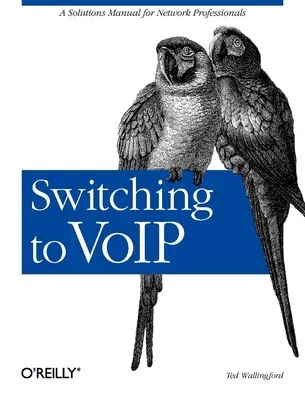More and more businesses today have their receive phone service through
Internet instead of local phone company lines. Many businesses are also
using their internal local and wide-area network infrastructure to
replace legacy enterprise telephone networks. This migration to a single
network carrying voice and data is called convergence, and it's
revolutionizing the world of telecommunications by slashing costs and
empowering users. The technology of families driving this convergence is
called VoIP, or Voice over IP.
VoIP has advanced Internet-based telephony to a viable solution, piquing
the interest of companies small and large. The primary reason for
migrating to VoIP is cost, as it equalizes the costs of long distance
calls, local calls, and e-mails to fractions of a penny per use. But the
real enterprise turn-on is how VoIP empowersbusinesses to mold and
customize telecom and datacom solutions using a single, cohesive
networking platform. These business drivers are so compelling that
legacy telephony is going the way of the dinosaur, yielding to Voice
over IP as the dominant enterprise communications paradigm.
Developed from real-world experience by a senior developer, O'Reilly's
Switching to VoIP provides solutions for the most common VoIP
migration challenges. So if you're a network professional who is
migrating from a traditional telephony system to a modern, feature-rich
network, this book is a must-have. You'lldiscover the strengths and
weaknesses of circuit-switched and packet-switched networks, how VoIP
systems impact network infrastructure, as well as solutions for common
challenges involved with IP voice migrations. Among the challenges
discussed and projects presented:
- building a softPBX
- configuring IP phones
- ensuring quality of service
- scalability
- standards-compliance
- topological considerations
- coordinating a complete system ?switchover?
- migrating applications like voicemail and directoryservices
- retro-interfacing to traditional telephony
- supporting mobile users
- security and survivability
- dealing with the challenges of NAT
To help you grasp the core principles at work, Switching to VoIP uses
a combination of strategy and hands-on "how-to" that introduce VoIP
routers and media gateways, various makes of IP telephone equipment,
legacy analog phones, IPTables and Linux firewalls, and the Asterisk
open source PBX software by Digium.You'll learn how to build an IP-based
or legacy-compatible phone system and voicemail system complete with
e-mail integration while becoming familiar with VoIP protocols and
devices. Switching to VoIP remains vendor-neutral and advocates
standards, not brands. Some of the standards explored include:
- SIP
- H.323, SCCP, and IAX
- Voice codecs
- 802.3af
- Type of Service, IP precedence, DiffServ, and RSVP
- 802.1a/b/g WLAN
If VoIP has your attention, like so many others, then Switching to VoIP
will help you build your own system, install it, and begin making calls.
It's the only thing left between you and a modern telecom network.

